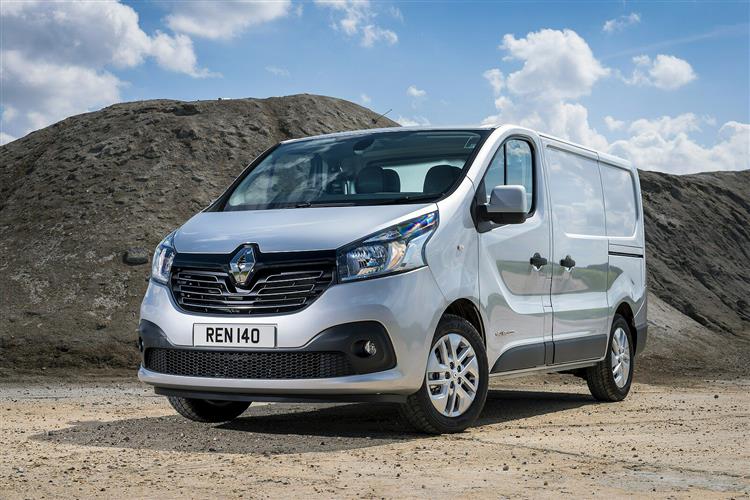TRAFIC BRIGHT (some text hidden) --NONE--
By Jonathan Crouch
Introductionword count: 81
With smarter looks, extra efficiency and plenty of technology, the third generation Renault Trafic launched in 2014 aimed to build on the huge success of its predecessor in the medium-sized van segment. It's a Transit Custom and Volkswagen Transporter LCV rival that in MK2 form was much easier to live with and nicer to drive. Which all means that if you're choosing a vehicle of this kind from the 2014-2019 era for your business, it needs to be on your shortlist.
Modelsword count: 5
Medium-sized van (1.6 CDTi diesel)
Historyword count: 255
This MK3 model Trafic van was a very important van indeed - at least for its makers Renault. Back in 2014, at a time when a risky development emphasis on electric power had left sales of the company's passenger cars under threat, the brand's continued leadership of the European Light Commercial Vehicle segment was crucial. And more than any other product, this was the vehicle that was tasked with sustaining that. It certainly needed to make good on its glossy brochure promises in order to face down direct medium-sized LCV rivals from the period as talented as Ford's Transit Custom, Volkswagen's Transporter, Mercedes' Vito and the shared design sold as either a Peugeot Expert, a Citroen Dispatch or a Fiat Scudo. An even tougher challenge for Renault lay in differentiating this product from its near-identical design stablemate from the 2014-2019 period, Vauxhall's Vivaro. Your selection between this vehicle and its Vauxhall counterpart on the used market may come down to deals and personal preference but if Renault's claims for this MK3 Trafic model are correct, then you could find yourself choosing this design over other market sector rivals for more concrete reasons. The downsized 1.6-litre diesel engines look impressively clean and frugal, the large load area may be bigger than you expect and the infotainment provision is quite comprehensive for a van from this era. This model sold in this form until 2019, when it was significantly updated with 2.0-litre diesel engines. It's the earlier 1.6-litre 2014-2019-era Trafic models though, that we look at here.
What You Getword count: 357
Though this design was shared between several brands, when produced as a Renault Trafic, it certainly had its own identity, with a more assertive front end than its predecessor. Slender headlamp units flank a large front grille that presents the Renault diamond emblem centre and upright above a black contrast strip. And the windscreen is steeply-raked and car-like, creating a distinct break from the line of the bonnet. Once you're in the cab, you'll find style and switchgear that very much conformed to Renault's 2014-era design language. Especially the instrument cluster with its oval centre digital read-out and flanking round rev counter and fuel gauges. It was borrowed straight from the brand's little Clio supermini. Elsewhere around the dash, there are quality touches - like the chunky three-spoke wheel and the chrome-effect surround for the instrument panel. And stuff that doesn't feel quite as smart - like the entry-level stereo system and the air conditioning controls. If you ran a second generation Trafic model, you'll also notice quite a lot of extra space too, this MK3 design offering an extra 116mm of cabin length for all front seat occupants. Well, almost all. If you happen to have drawn the short straw and find yourself stuck in the middle of the cab in front of the dash-mounted gearstick, your journey will be as comfort-compromised as it always is in vans that offer such an extra middle seat berth. We're not going to criticise that. There's not much the designers can do to make this feature more usable and you might be thankful to have it if, for instance, you need to do things like drop the kids off at school on the way to work. In any case, if you've got yourself a model with the 'mobile office'-style folding front seat, you'll find that most of the time, you won't be using this space for seating anyway. Fold it down and you've got yourself a workable desk surface with a (rather flimsy-feeling) clipboard attachment and ample space for a laptop you can quickly link into the various infotainment technology features on offer via an optional 7-inch colour touchscreen.
To see the full road test text contact us on 0330 0020 227
Pictures (high res disabled)

.jpg)
|
.jpg)
|
.jpg)
| |||
.jpg)
|
Scoring (subset of scores)
Category: Vans
| Performance | |
| Handling | |
| Comfort | |
| Space | |
| Styling, Build, Value, Equipment, Depreciation, Handling, Insurance and Total scores are available with our full data feed. | |



